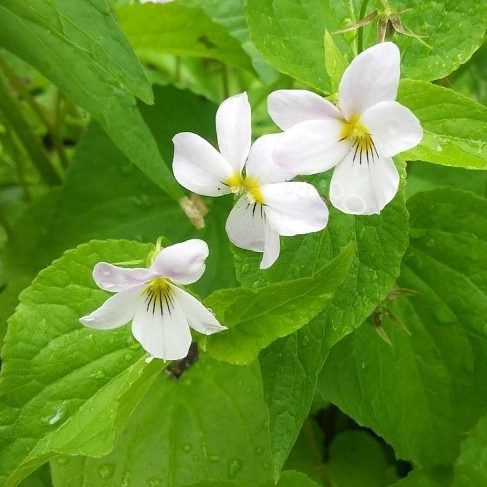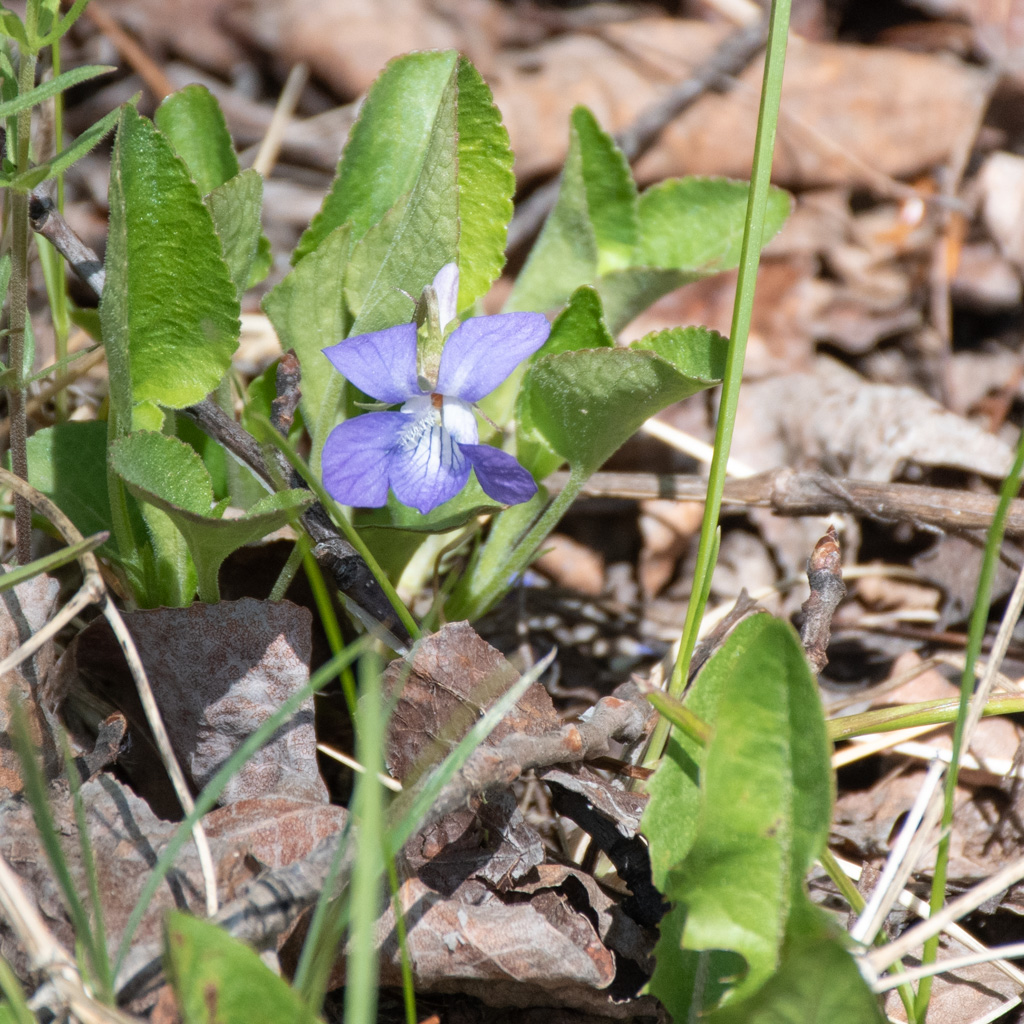Choke Cherry (Prunus virginiana) Shrub grows between 1 and 6 m tall. The leaves are elliptic and pointed at tips, darker above than below, hairless but edges have fine sharp teeth. It blooms in many-flowered, bottlebrush-like clusters at end of branches from May to June.
Fruits are shiny purple to black cherries around 8mm across, ripe in late August. They are edible and can be sweet, but “astringent.” The stones contain hydrocyanic acid and should not be swallowed.
Source: Johnson, Kershaw, MacKinnon, Pojar. Plants of the Western Boreal Forest & Aspen Parkland. Lone Pine Publishing, 1995.
WASKAHEGAN FIELD NOTES
The showy blooms in May accompany us on many Waskahegan trails, in clearings and open forest areas, also on hillsides and dry and exposed locations. Often found alongside High Bush Cranberries and Saskatoons.
Although we are discouraged from picking along the Waskahegan Trail, if you like making jam from wild fruit, Ilona recommends a mixture of Choke Cherry and High Bush Cranberry. After boiling with only a small amount of sugar, you need to pass the fruit through a colander to remove the seeds.
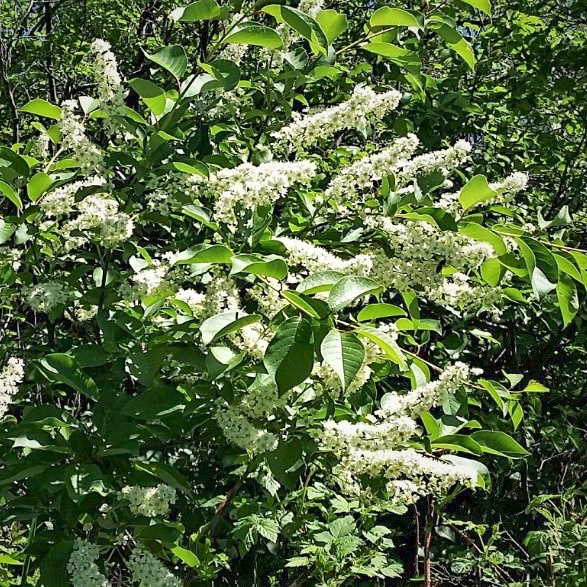
Chokecherry in bloom 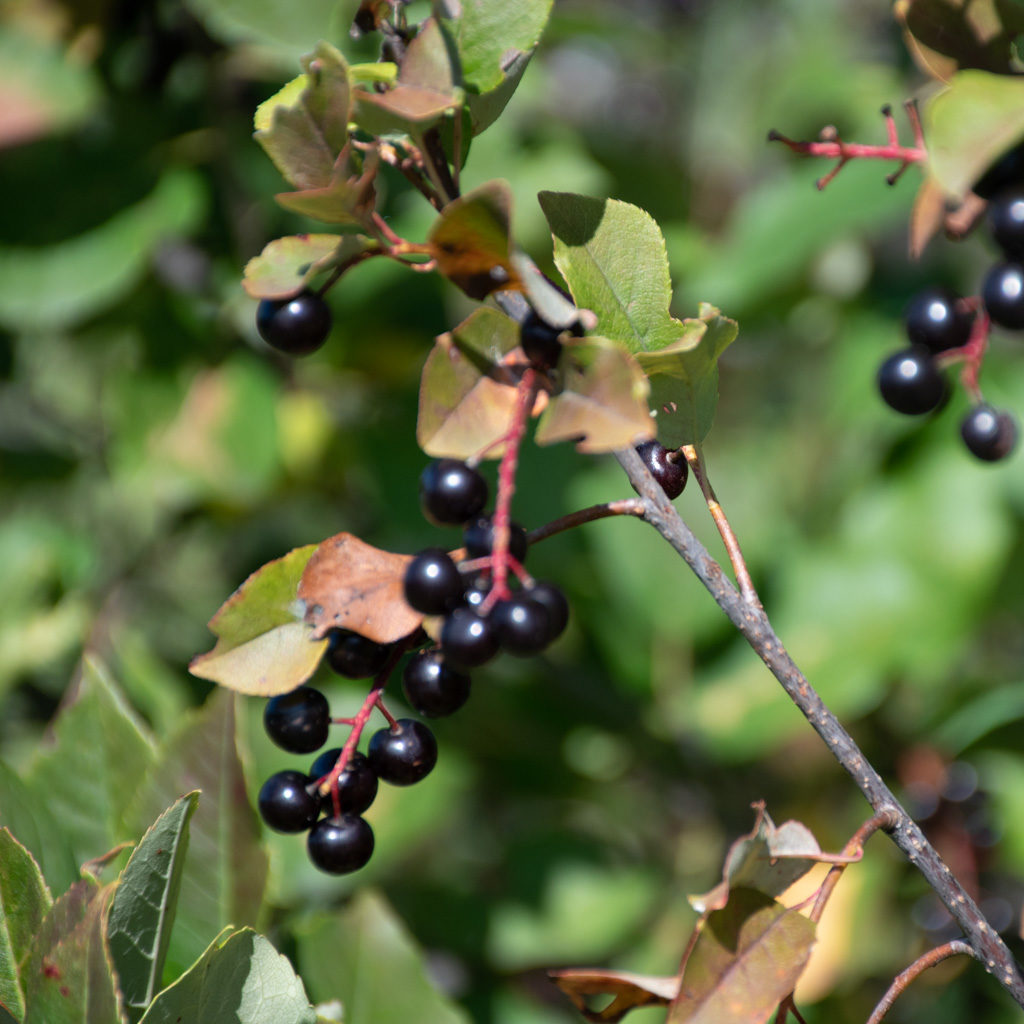
Chokecherry fruit 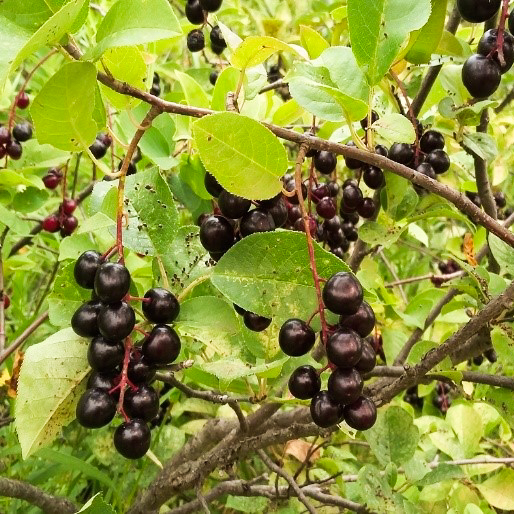
Chokecherry fruit
